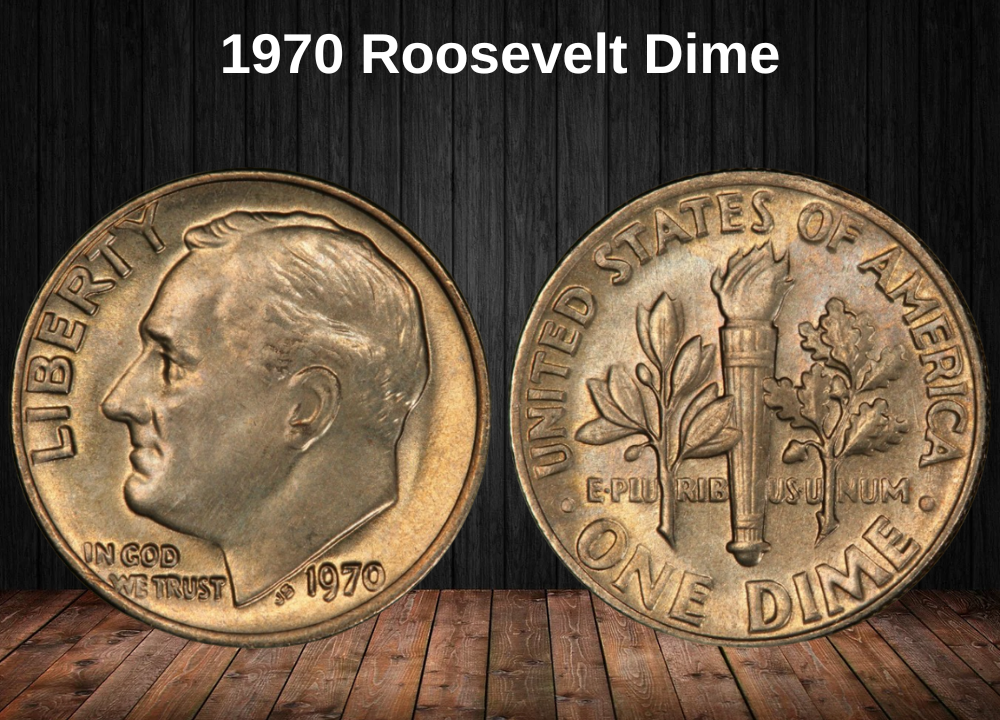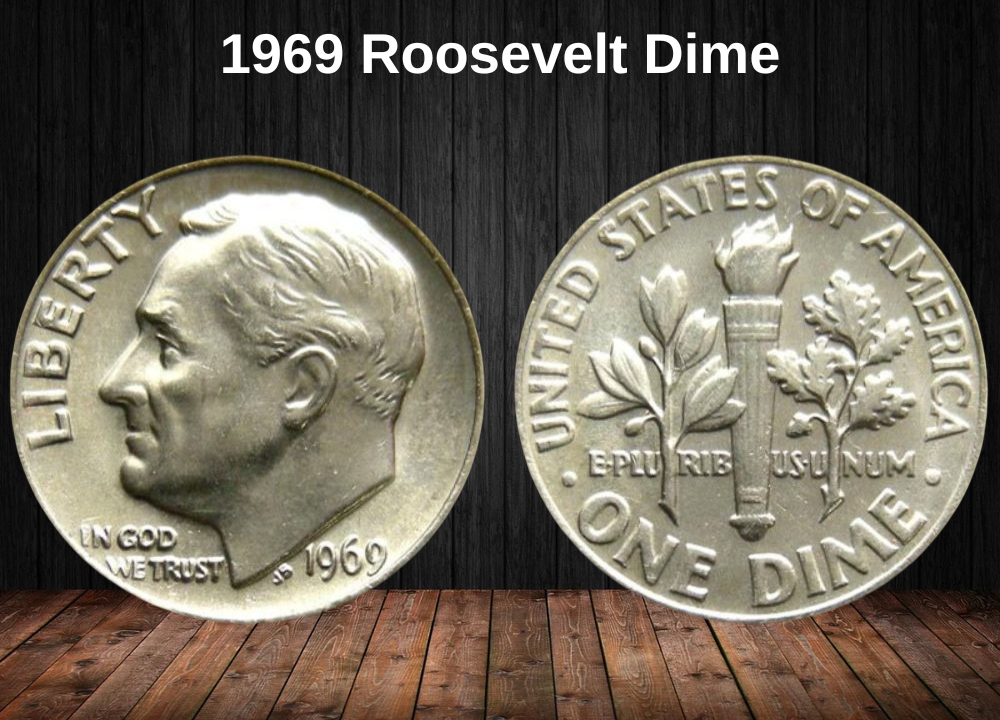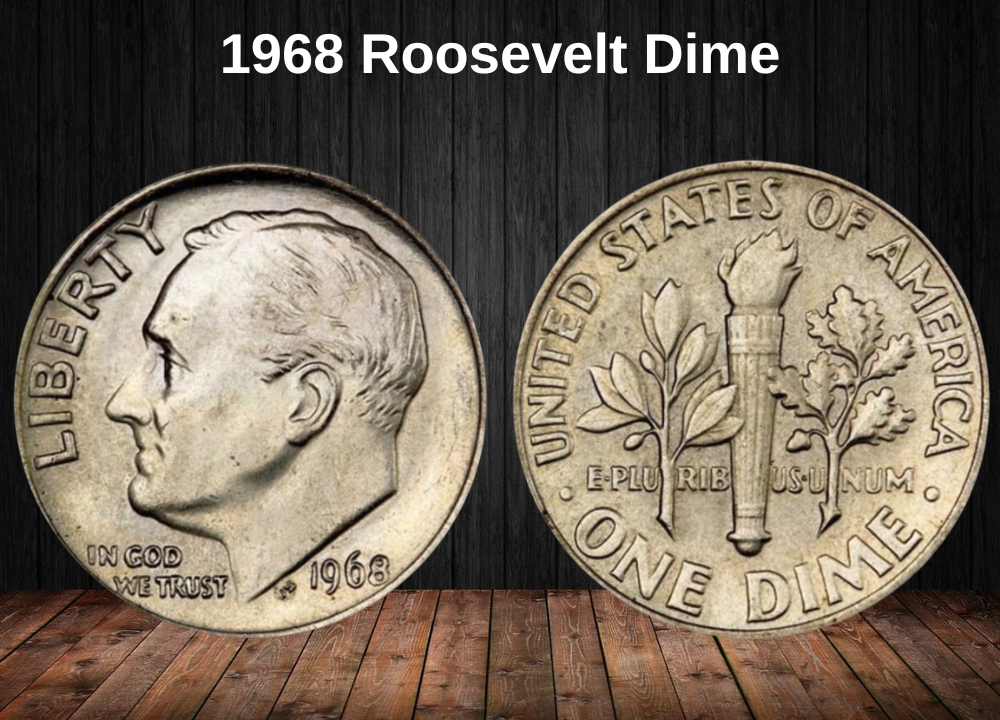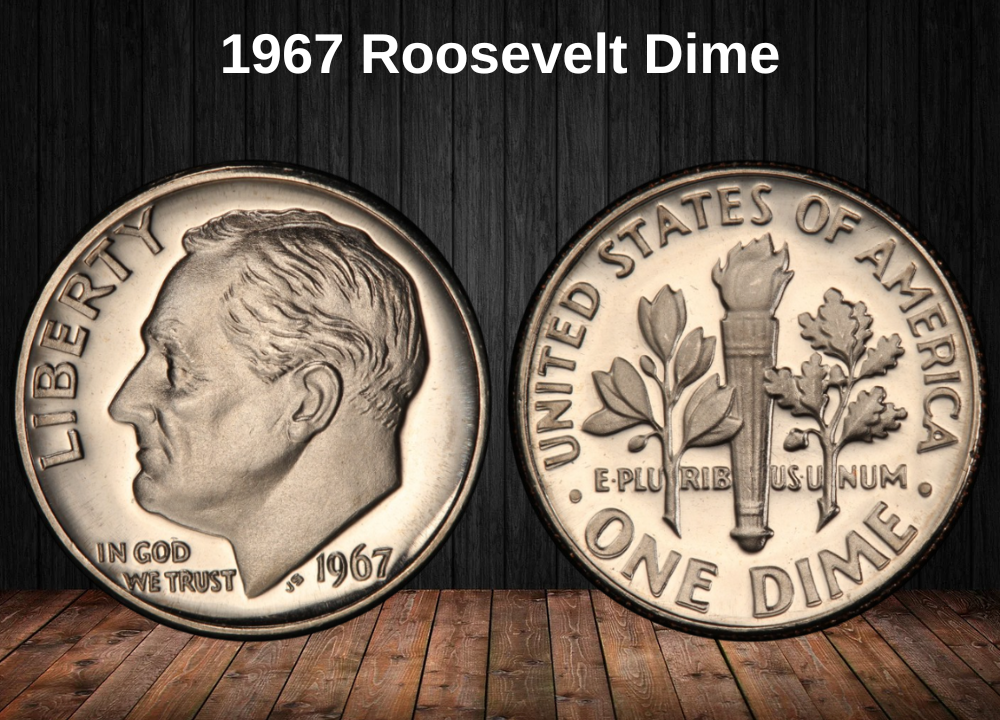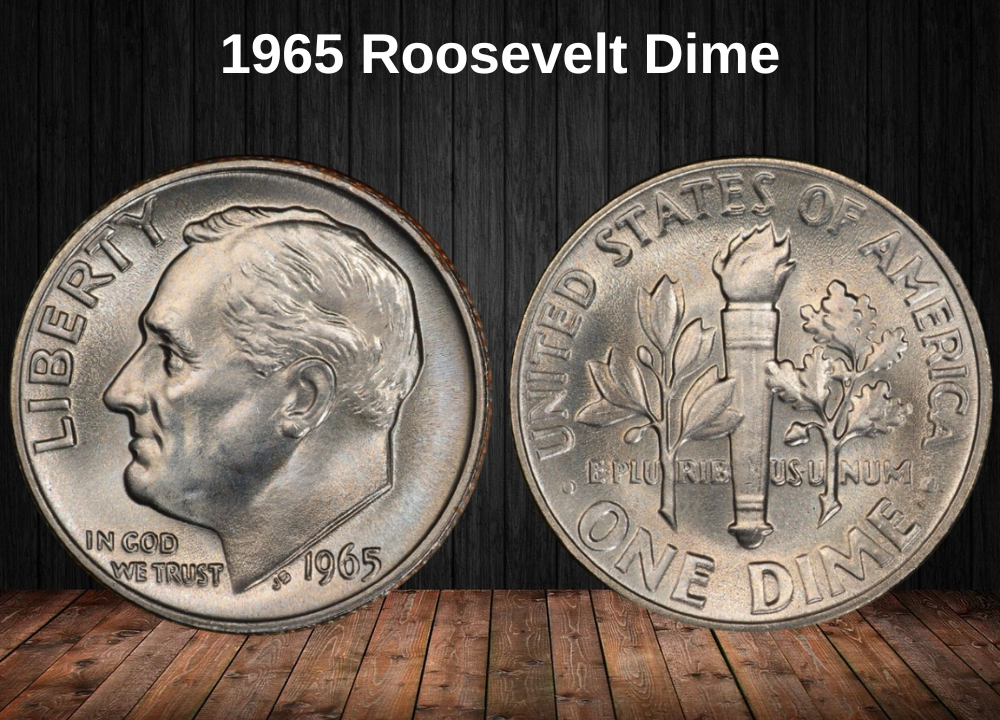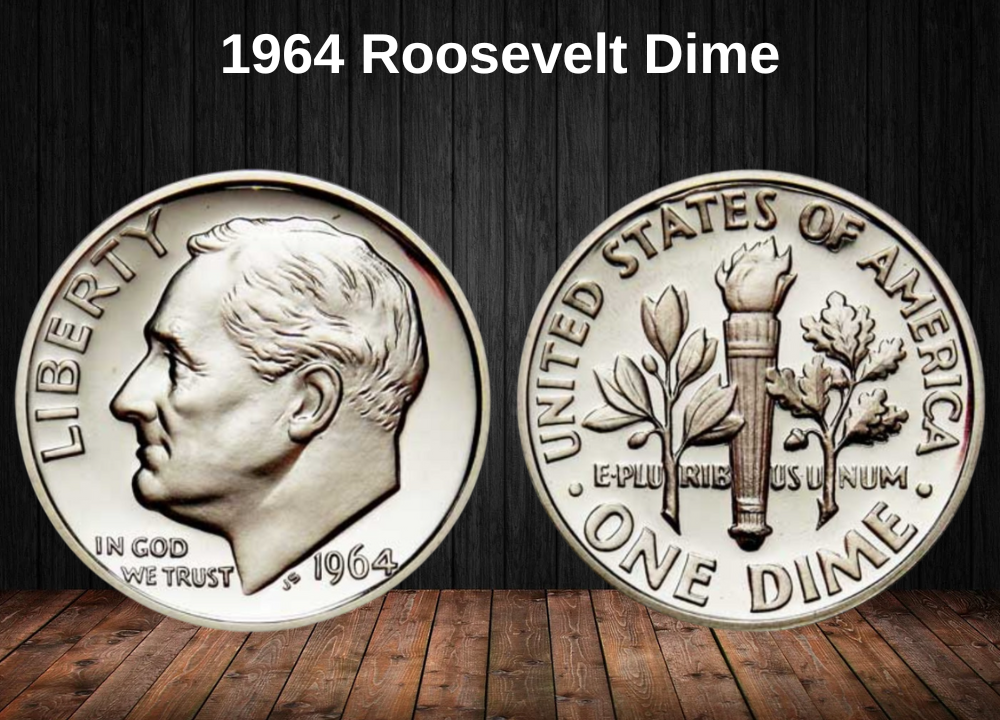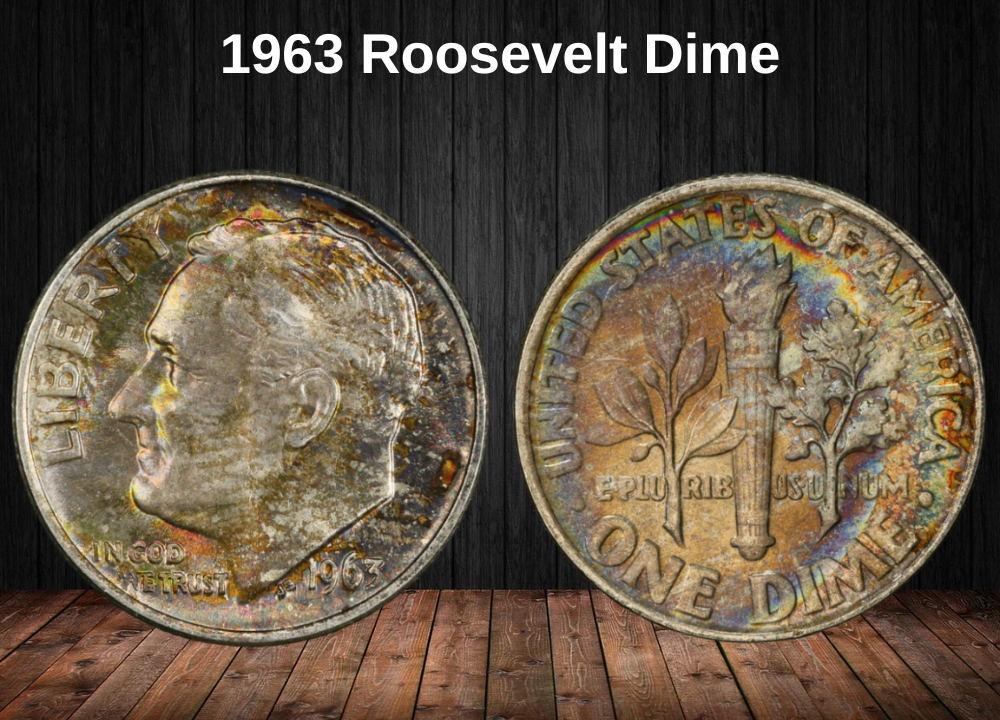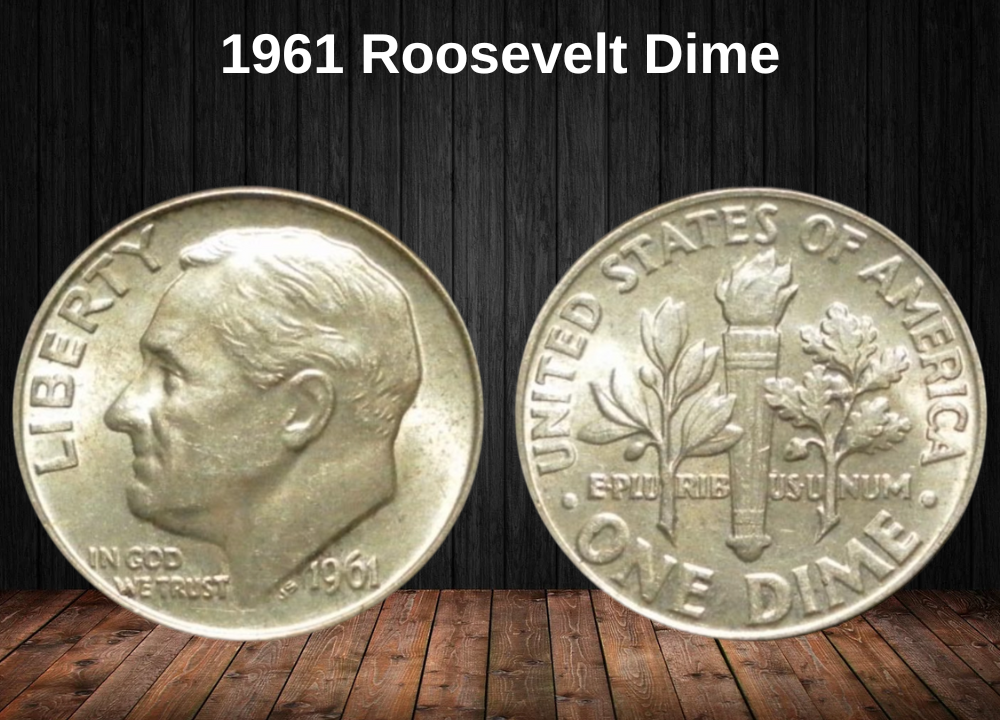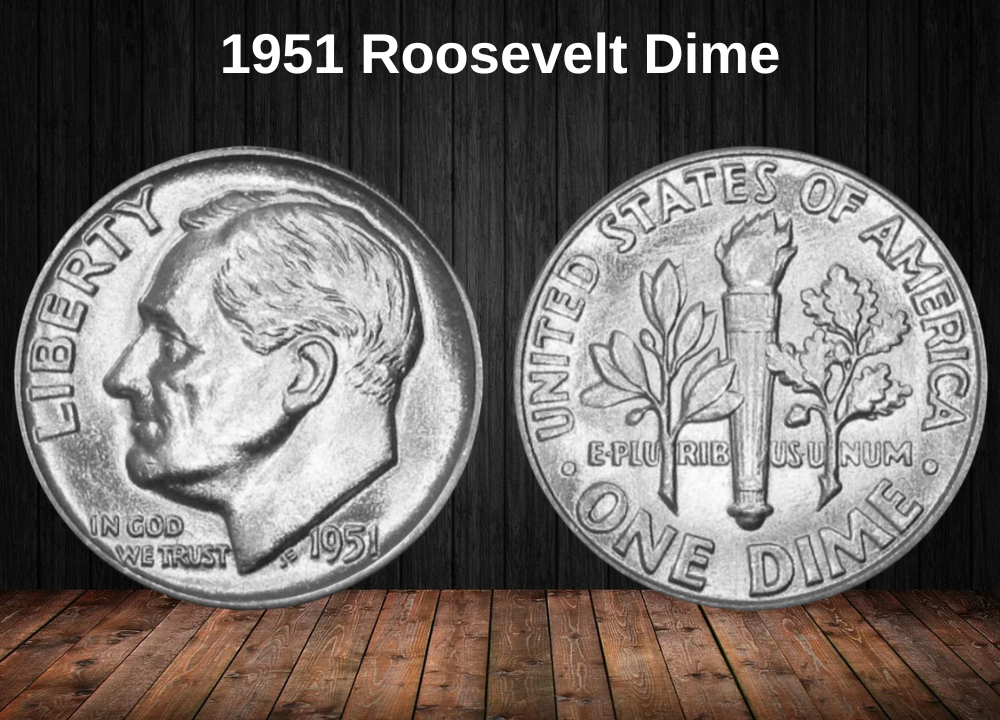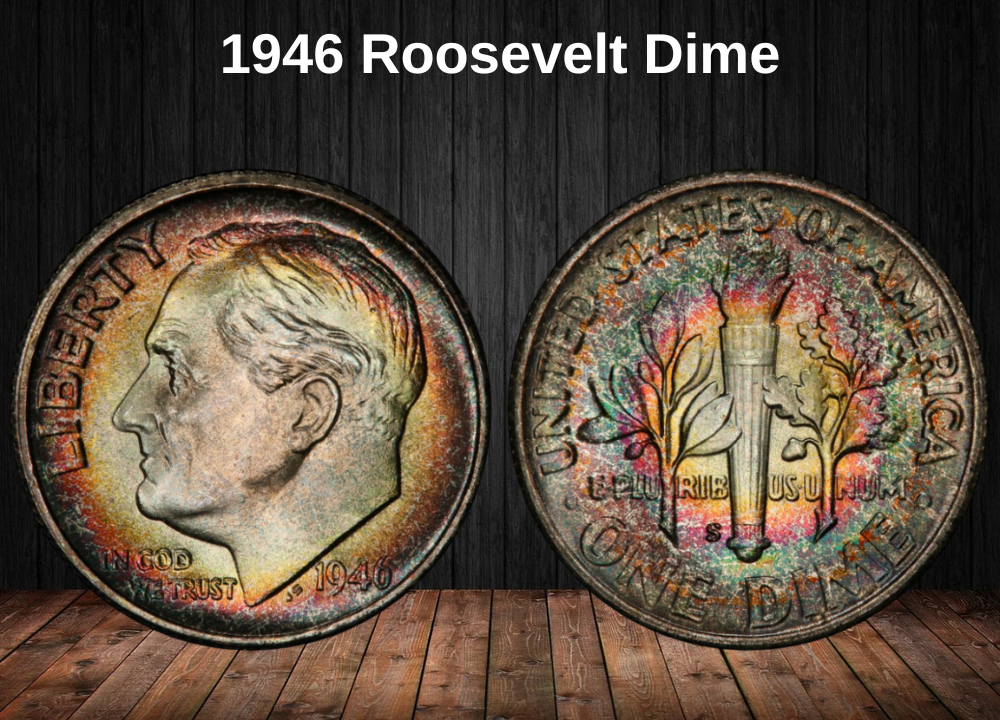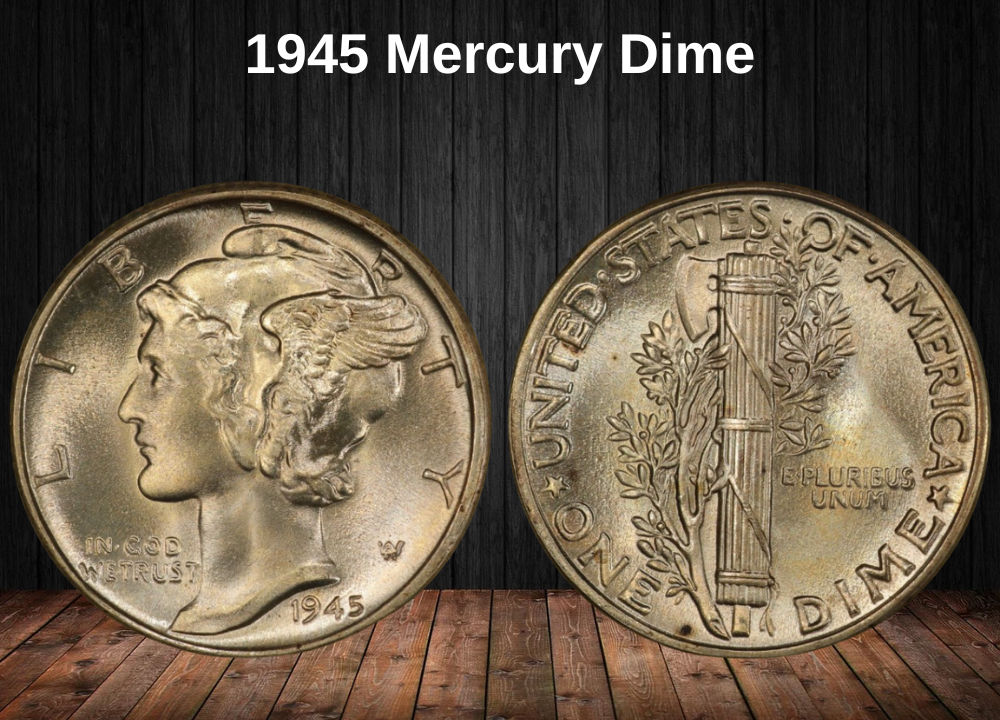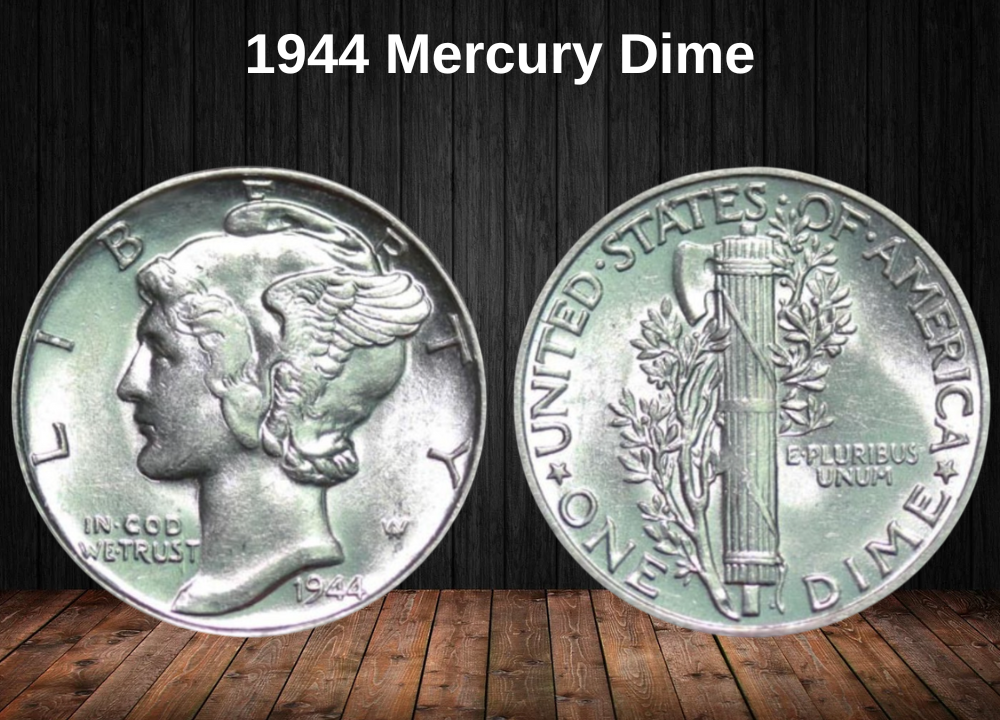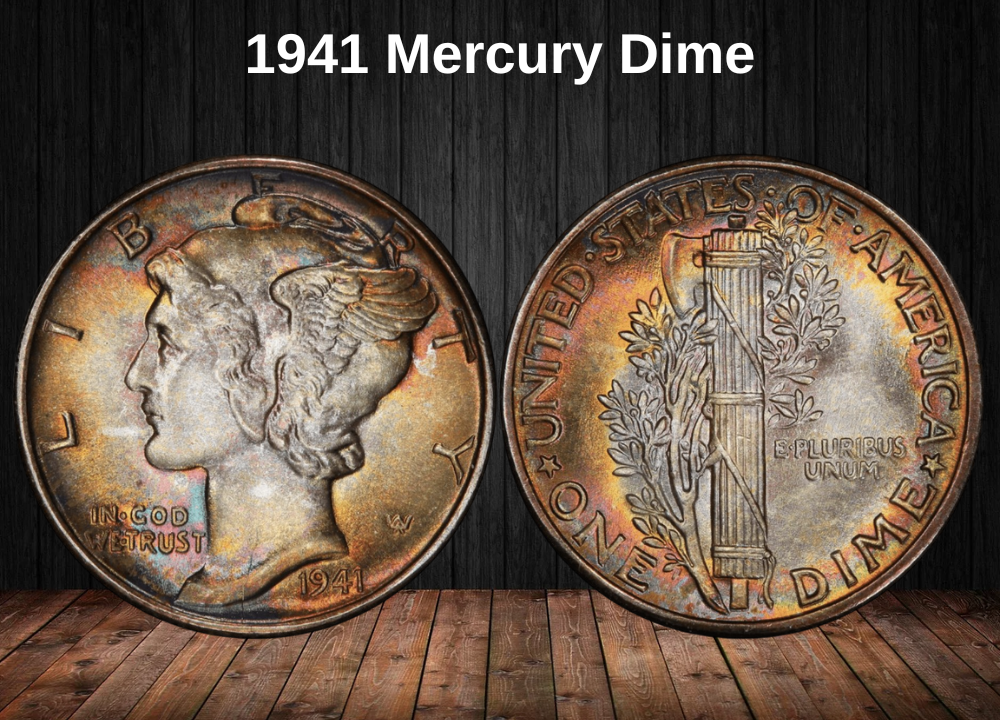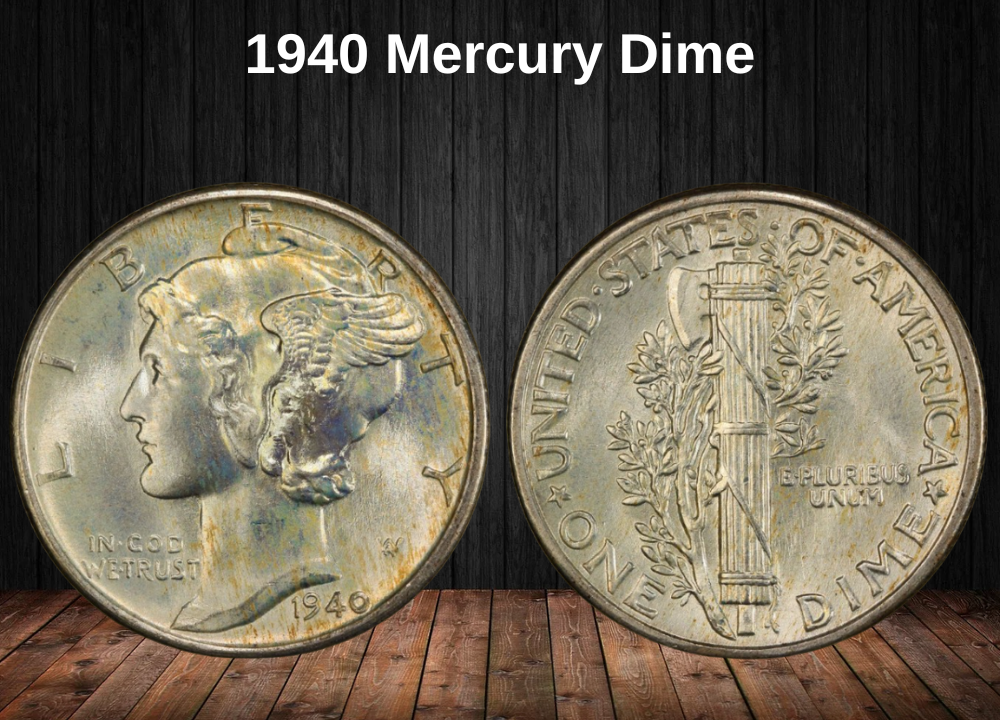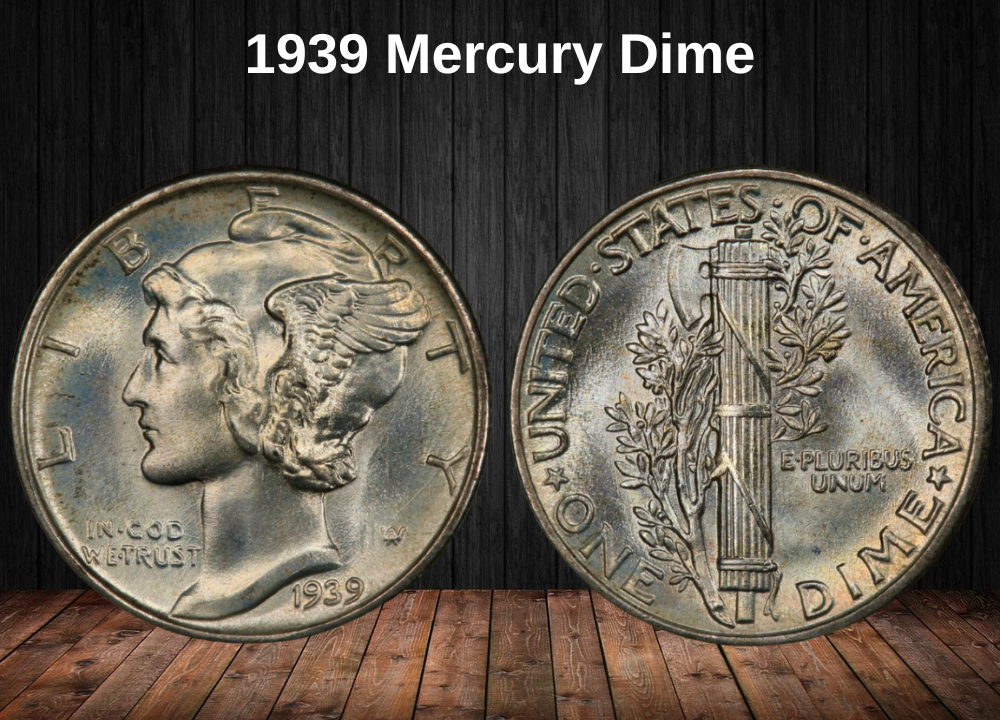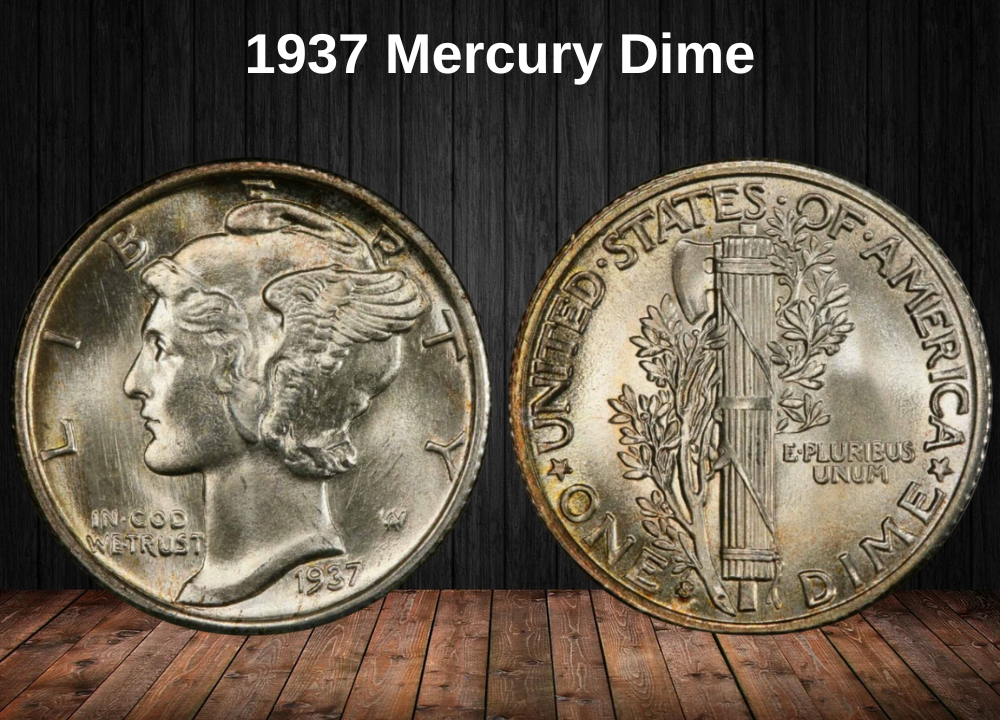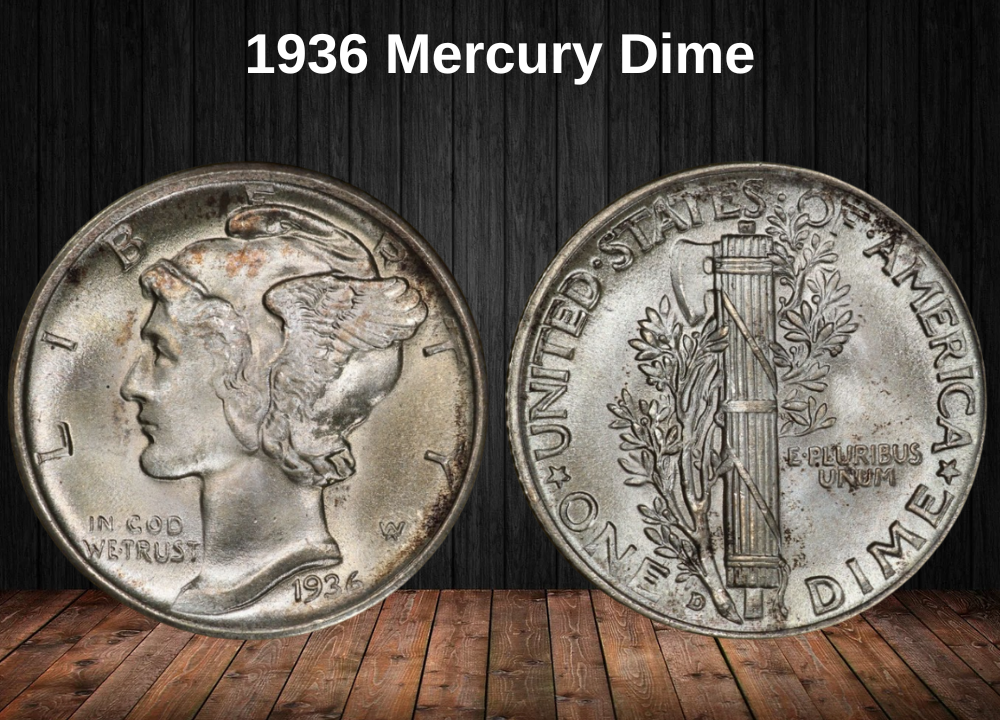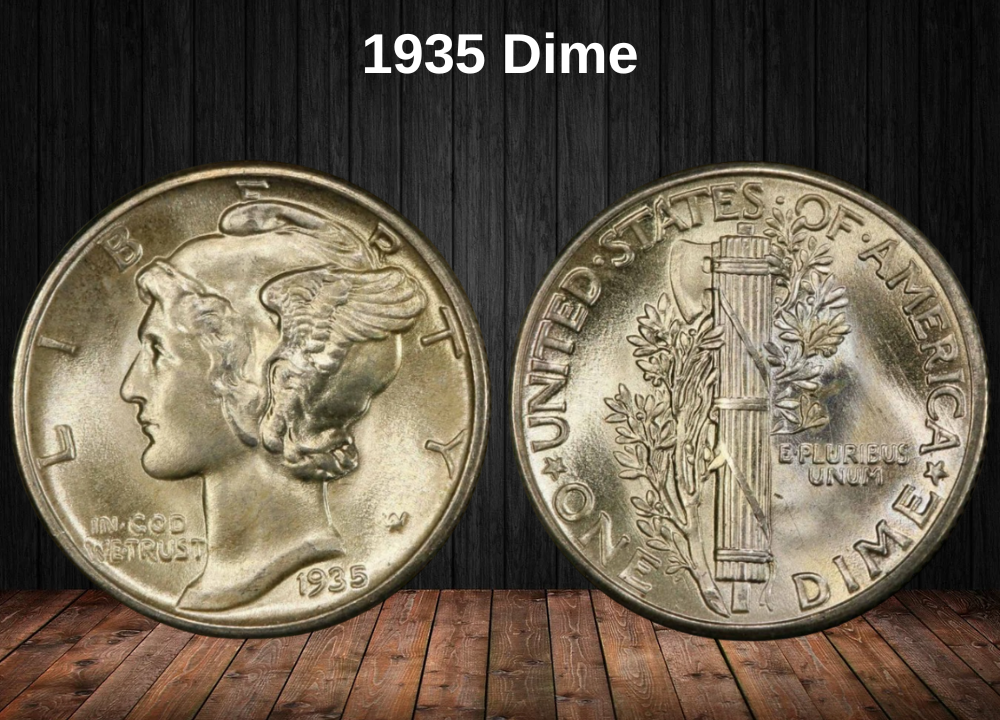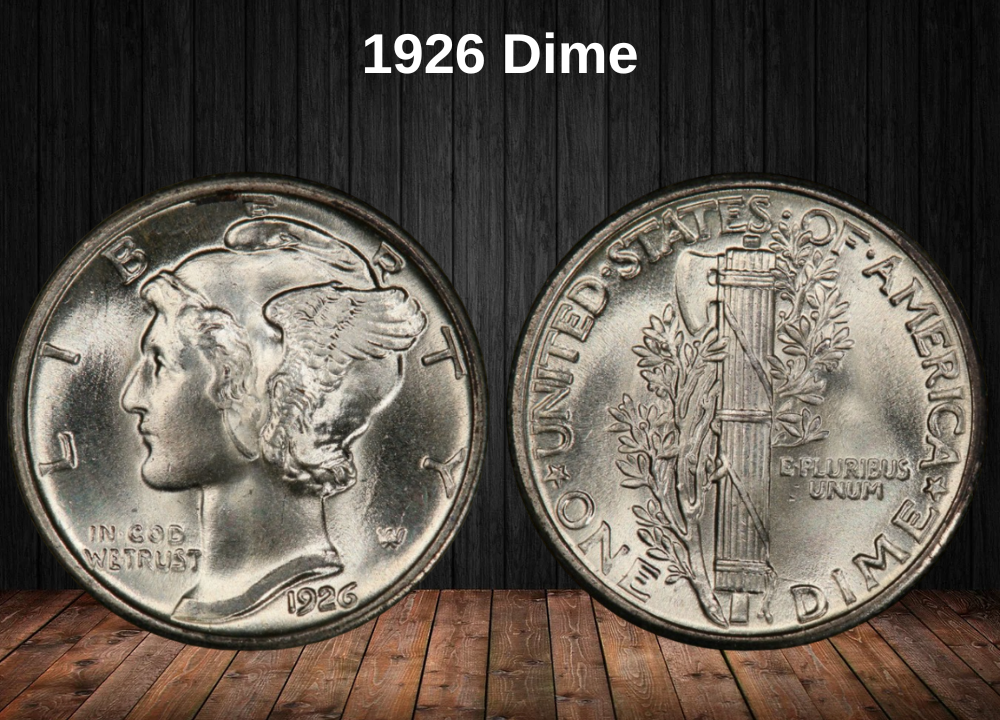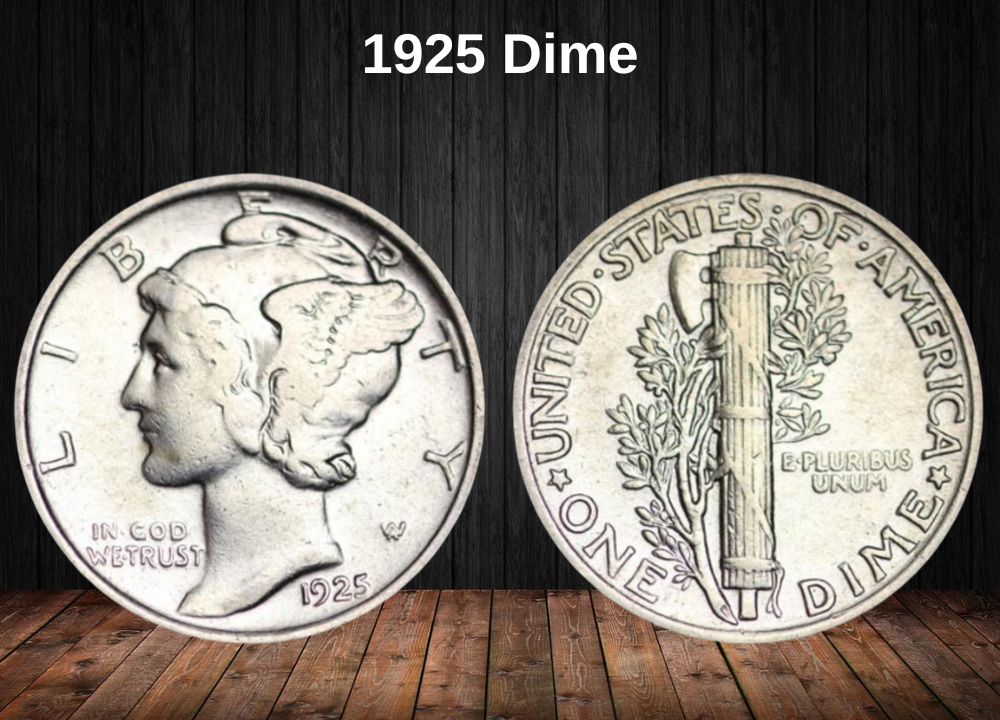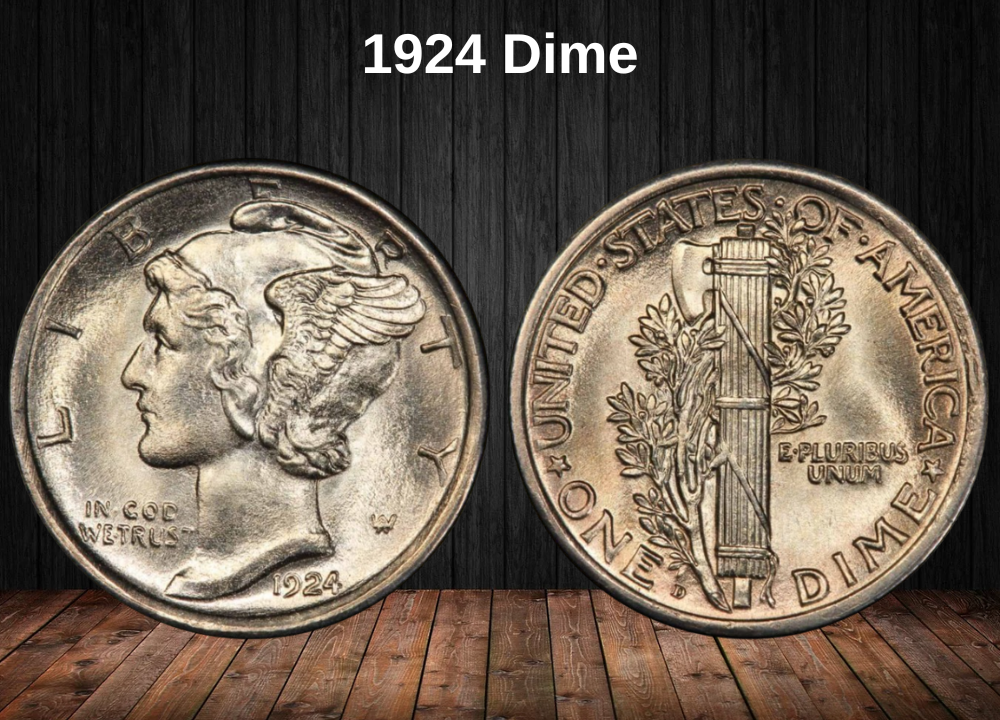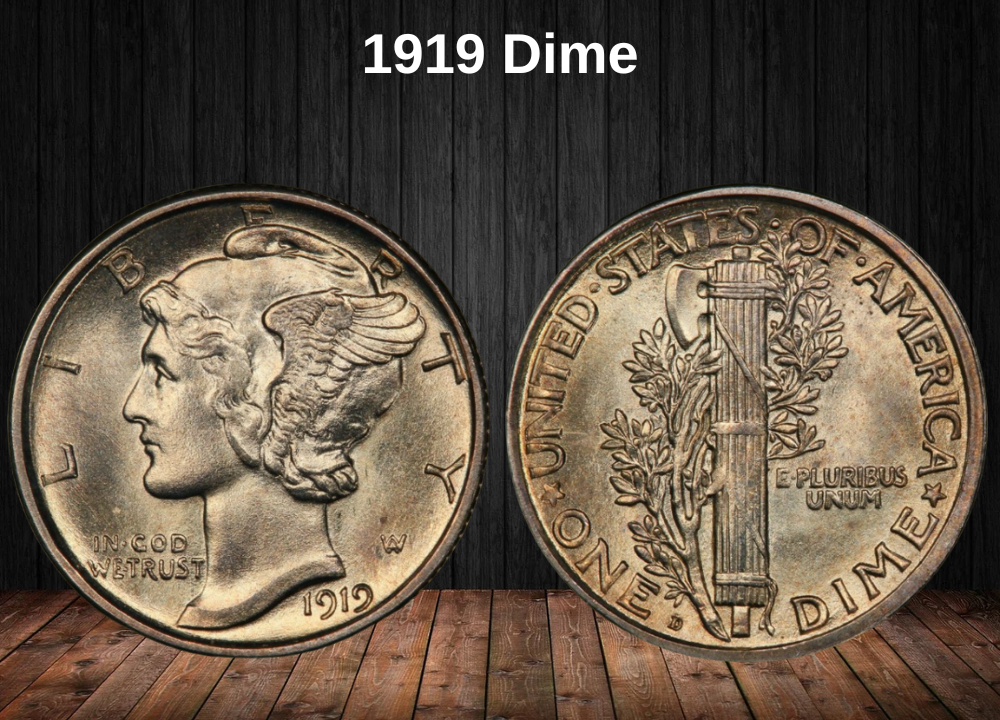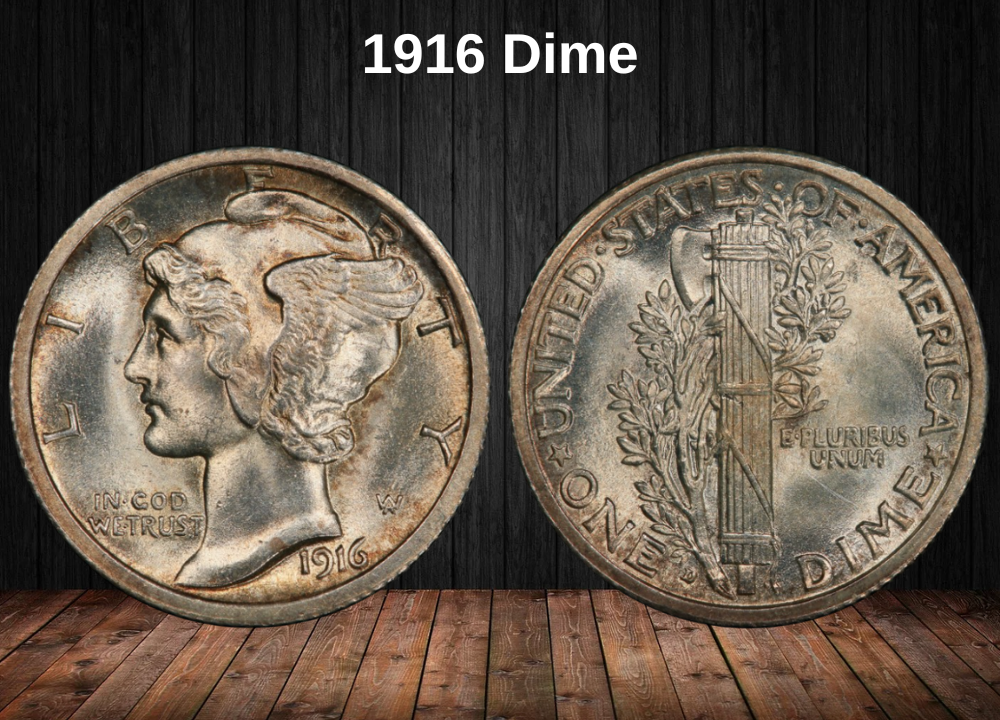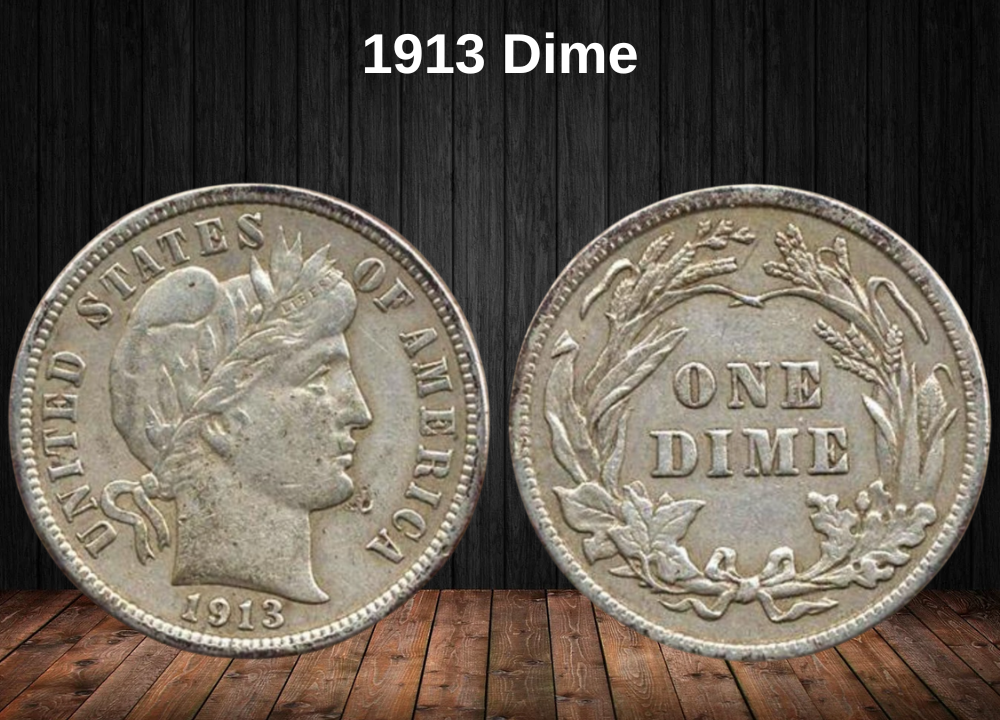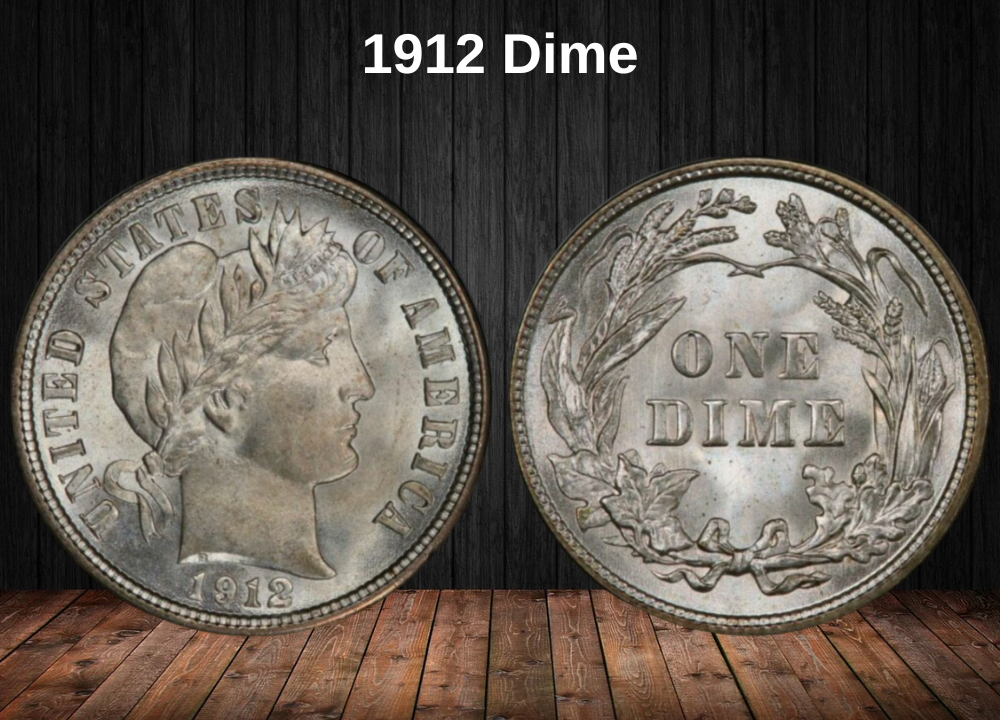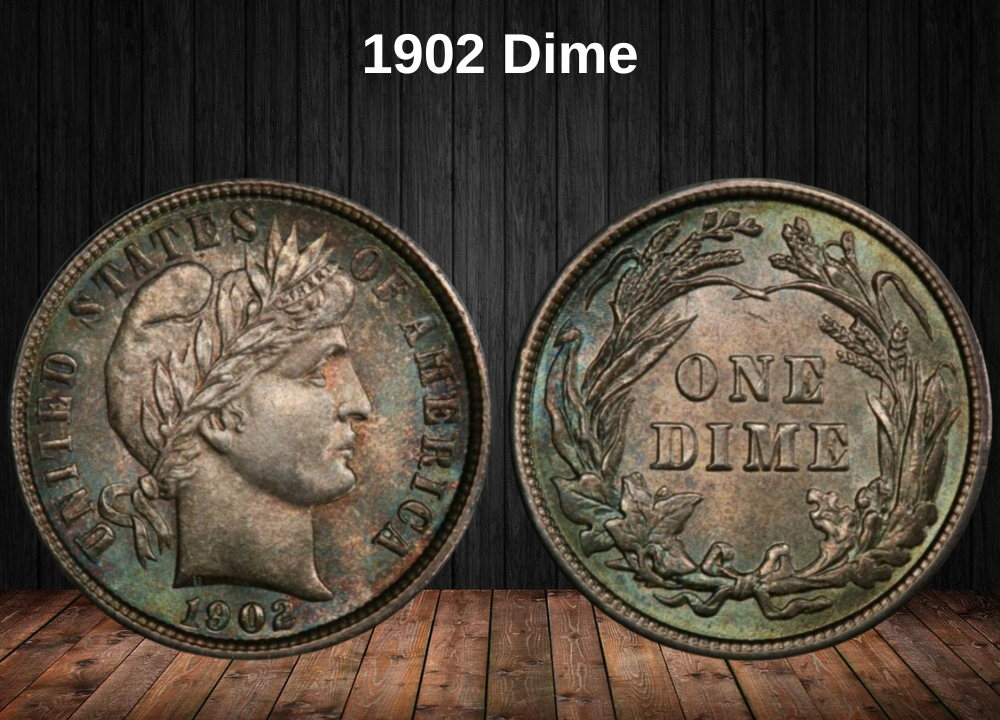The 10-cent coin struck in 1975 is part of the Roosevelt dime series, first introduced in 1946. While most examples are common and worth only face value, some pieces can be extremely valuable due to rarity or Mint errors.
In this guide, we’ll break down the 1975 dime value, show how much circulated and uncirculated examples are worth, and explain which errors and varieties can dramatically increase a coin’s price.
1975 Dime Value Chart
| Mint mark | AU58 | MS60 | MS65 | MS67 |
|---|---|---|---|---|
| 1975 No Mint Mark Dime | $1 | $4 Full band: $4 | $28 Full band: $55 | $200 Full band: $2,250 |
| 1975-D Dime | $1 | $4 Full band: $4 | $7 Full band: $30 | $40 Full band: $550 |
| Proof Grade | PR60 | PR66 | PR68 | PR70 |
|---|---|---|---|---|
| 1975-S Proof Dime (Deep Cameo) | $4 | $8 | $12 | $110 |
| 1975 No-S Proof Dime | n/a | n/a | $575,000 | n/a |
History of the 1975 Dime
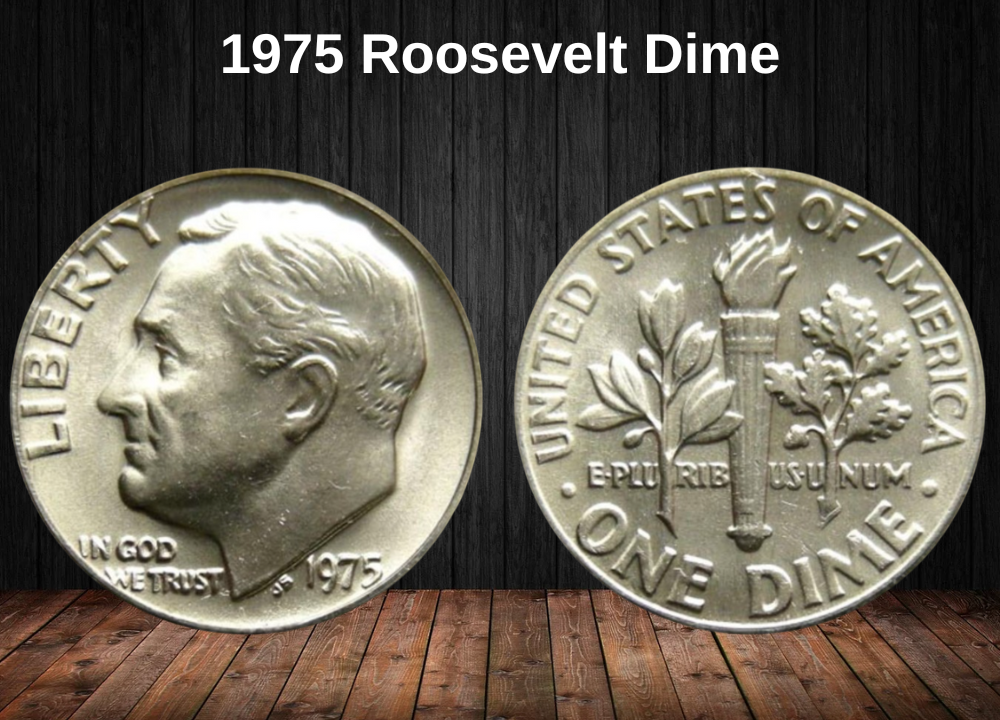
The 1975 Roosevelt dime belongs to a series that has been in continuous production since 1946. It carries the portrait of Franklin D. Roosevelt, the 32nd President of the United States, honored on the coin just one year after his death.
Roosevelt’s image was chosen not only for his role as president but also because of his connection to the March of Dimes, the nationwide campaign he inspired to raise money for research against polio, the disease he himself battled. For collectors, this link gives the dime both historical weight and symbolic meaning.
The design was created by John R. Sinnock, the Chief Engraver of the U.S. Mint. Despite repeated criticisms from the Commission of Fine Arts, Sinnock’s work was eventually approved, and the first dimes were struck in January 1946. They were officially released into circulation on January 30, Roosevelt’s birthday, making the coin a true tribute to his legacy.
Originally, Roosevelt dimes were struck in 90% silver and 10% copper, giving them both monetary and bullion value. However, the rising price of silver during the 1960s led to widespread hoarding, as the precious metal content was worth more than the coin’s face value.
In response, the U.S. Treasury changed the composition in 1965. From that year onward, circulation dimes—including those minted in 1975—were produced with a copper core clad in 75% copper and 25% nickel, retaining the same silver-like appearance without any actual silver.
This clad composition continues to be used today for all regular-issue Roosevelt dimes, while silver versions exist only in special collector proof sets.
Features of the 1975 Dime
The Obverse of the 1975 Dime
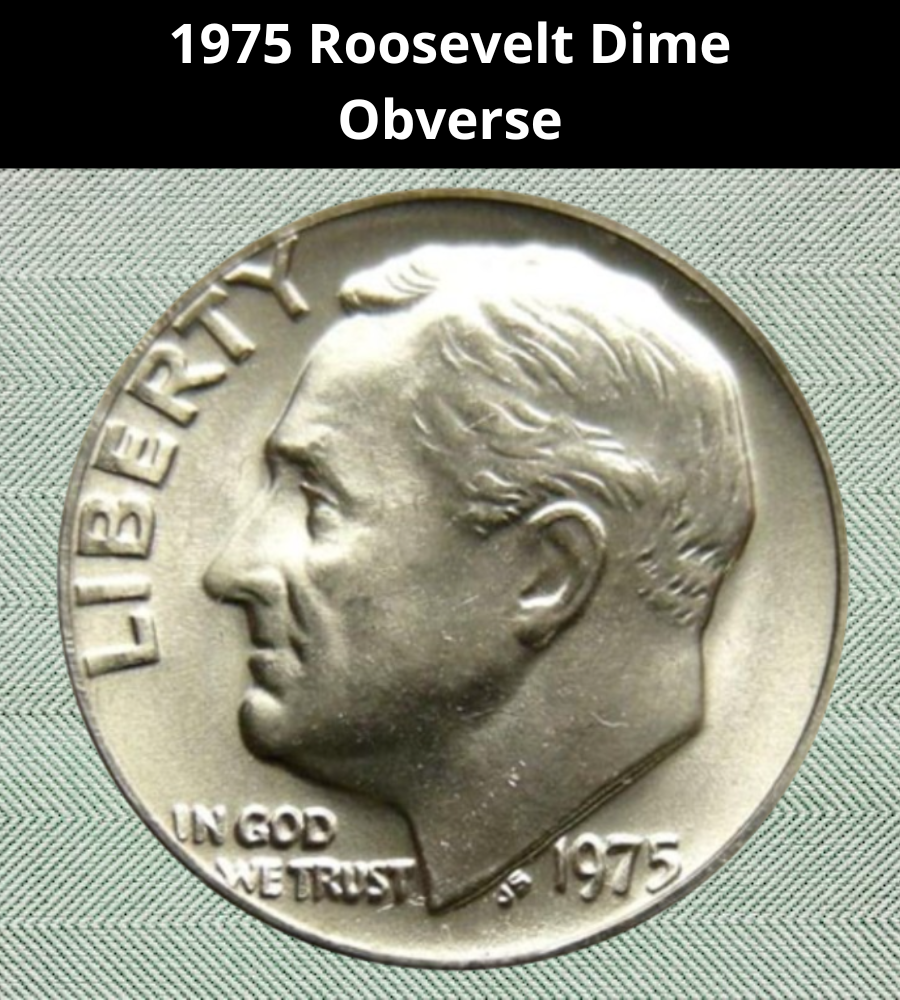
The obverse of the 1975 dime showcases John R. Sinnock’s portrait of Franklin D. Roosevelt. His head and neck are presented in profile, facing left.
- The word “LIBERTY” appears in front of Roosevelt, curving along the left rim.
- The motto “IN GOD WE TRUST” is inscribed below his chin, with the date (1975) placed nearby.
- Sinnock’s initials “JS” are found just beneath the portrait cutoff, inscribed diagonally.
- The mint mark is located above the date:
- D for Denver
- S for San Francisco
- No mint mark = Philadelphia
Sinnock faced significant resistance from the Commission of Fine Arts, which rejected his early versions as “not good” and “lacking dignity.” After multiple revisions and a tense approval process, the design was finally accepted under the direction of Mint Director Nellie Tayloe Ross, despite the Commission’s objections.
The Reverse of the 1975 Dime

The reverse was also designed by Sinnock and symbolized liberty, peace, and strength through three elements:
- A torch in the center (liberty)
- An olive branch on the left (peace)
- An oak branch on the right (strength)
Inscriptions include:
- “UNITED STATES OF AMERICA” across the top rim.
- “ONE DIME” along the bottom.
- The motto “E PLURIBUS UNUM” runs horizontally through the torch and branches, meaning “Out of many, one”.
The original reverse design depicted a hand clutching all three symbols, but the Commission disliked it. Sinnock revised the design, removing the hand and arranging the branches symmetrically beside the torch—the configuration we see today.
Other Features of the 1975 Dime
Full Band (FB) and Full Torch (FT) Designations
Some 1975 Roosevelt dimes receive special recognition from grading agencies based on strike quality:
- Full Band (FB) – Used by PCGS. Refers to the reverse torch bands:
- Both the upper and lower pairs of horizontal bands must be fully separated.
- No significant marks should cross the bands.
- The coin must grade at least MS60.
- Full Torch (FT) – Used by NGC. Requires:
- Clear separation of both sets of horizontal bands.
- Each vertical line on the torch must also be fully struck and distinct.
These designations significantly increase a coin’s desirability and market value, as they indicate a sharper, more detailed strike.
1975 Dime Value Grading
| # | Grade |
|---|---|
| 1 | Basal State-1 |
| 2 | Fair |
| 3 | Very Fair |
| 4, 5, 6 | Good |
| 7, 8, 10 | Very Good |
| 12, 15 | Fine |
| 20, 30 | Very Fine |
| 40 | Extremely Fine |
| 50 | About Uncirculated |
| 60 | Mint State |
| 65 | Mint State |
| 70 | Mint State |
1975 Dime Value Guides
1975 No Mint Mark Dime Value
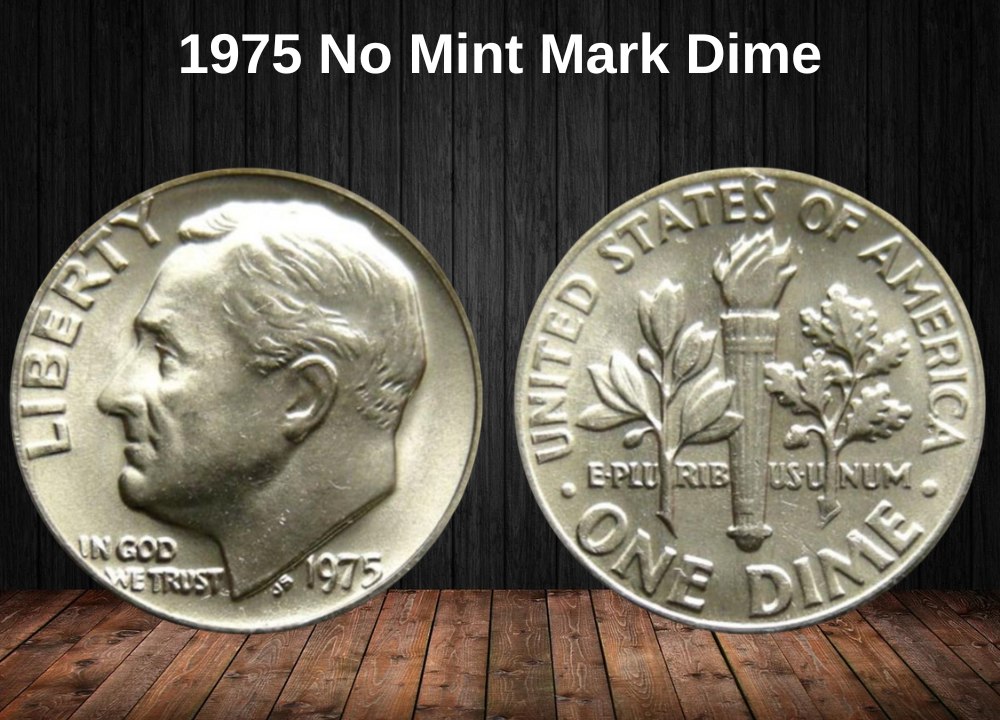
The Philadelphia Mint struck almost 586 million dimes in 1975. According to the PCGS, around 1.2 million survivors still qualify for the full band (FB) designation.
- In circulated grades, these coins are only worth face value.
- An AU58 (about uncirculated) example is worth about $1.
- An MS60 mint state coin is valued around $4, whether full band or not.
At higher grades, the full band designation makes a major difference:
- MS65 (gem): $28 (regular) vs. $55 (full band).
- MS67: $200 (regular) vs. $2,250 (full band).
The sharp premium reflects how rare high-grade, well-struck examples are from this year.
1975 D Dime Value
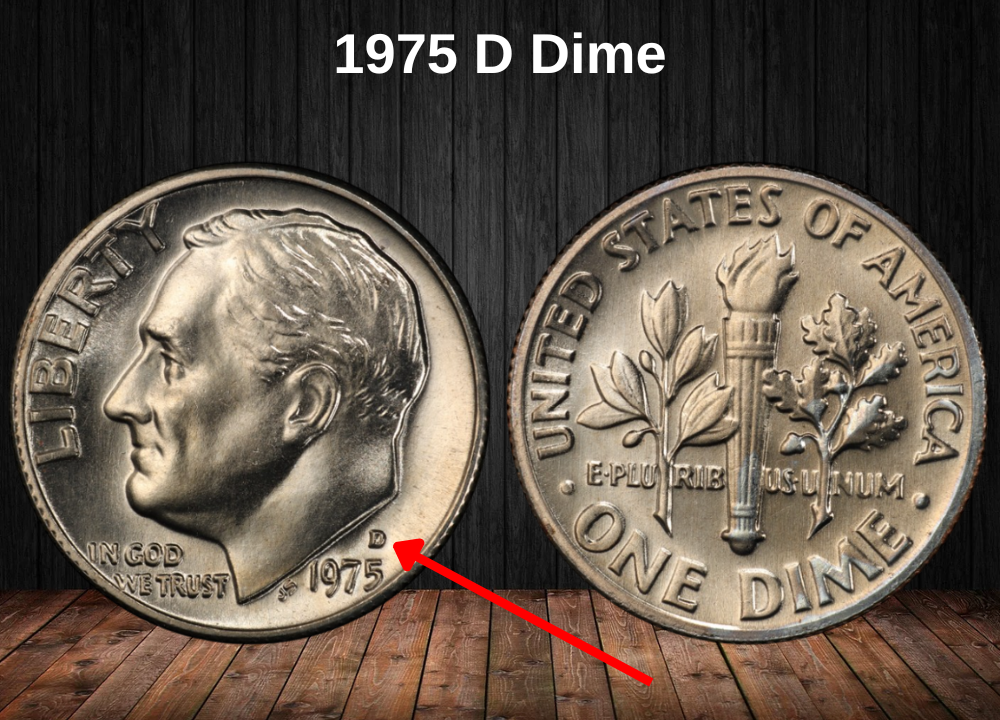
The Denver Mint produced about 314 million dimes in 1975. The PCGS estimates only 628,000 survivors remain across all grades.
- Circulated coins are typically worth only a few cents.
- At AU58, values climb to about $1.
- At MS60, both standard and full band coins are worth around $4.
For higher grades, the full band designation dramatically boosts values:
- MS65: $7 (regular) vs. $30 (full band).
- The finest known example is a full band MS68, unique and without a public sale record.
- A MS67+ full band coin is valued at around $1,250.
1975 S Proof Dime Value
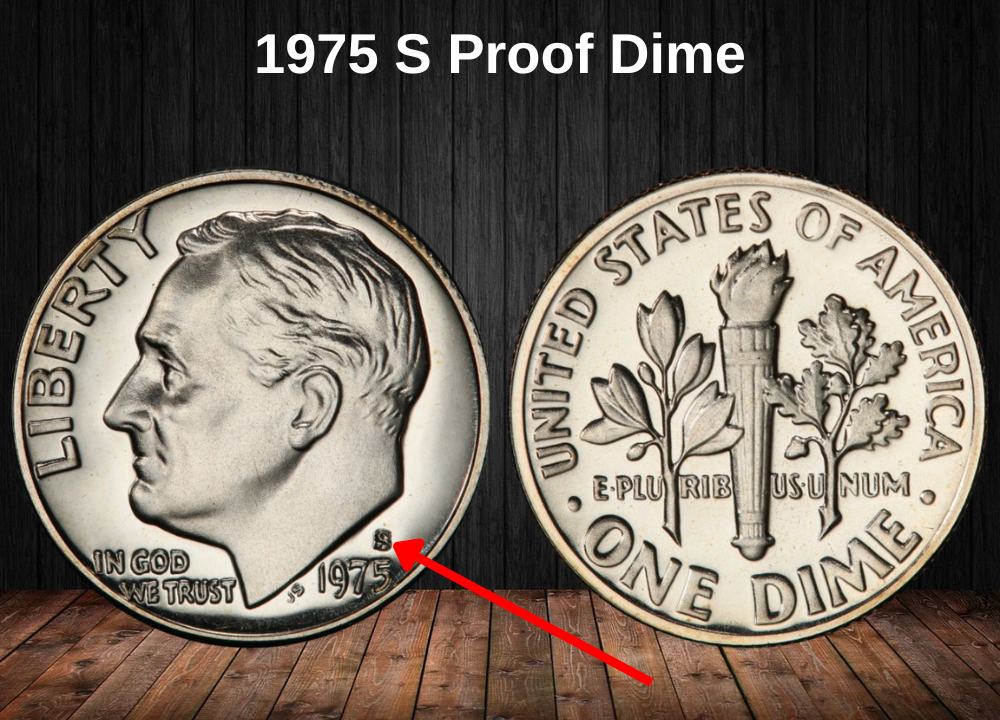
The San Francisco Mint struck over 2.8 million proof dimes in 1975, made with polished planchets and dies for collectors. Around 2.3 million survive, since these coins were generally preserved from circulation.
Proof coins are widely available and affordable:
- PR60 Deep Cameo: $4
- PR66: $8
- PR68: $12
- PR70 Deep Cameo (perfect grade): $110
Unlike circulation strikes, even top-graded proof dimes from 1975 are relatively inexpensive because of their high survival rate.
Rare 1975 Dime Errors List
1975 No S Proof Dime
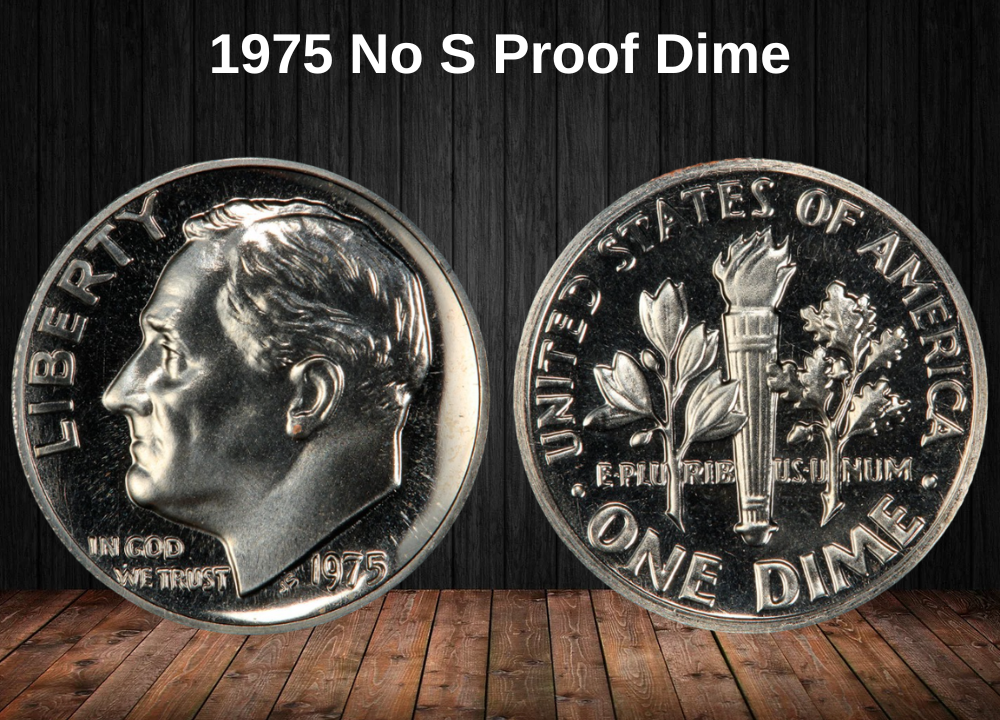
While most 1975 proof dimes are only worth a few dollars, there is one legendary error that makes this year famous among collectors: the 1975 No S Proof Dime.
Normally, proof dies were prepared in Philadelphia (which did not use mint marks) and then given an “S” before being shipped to San Francisco, where proof coins were struck. Occasionally, the mint mark was left off, resulting in the “No S” variety.
This happened in 1968, 1970, 1975, and 1983, but 1975 is the rarest by far:
- Only two examples of the 1975 No S Proof Dime are known to exist.
- One of them is graded PR68 and has been valued at an incredible $575,000.
Because of its rarity, many collectors consider the 1975 No S Dime one of the “holy grails” of modern U.S. coinage.
1975 S/S Proof Dime (Re-punched Mint Mark)
Another error found in 1975 proof dimes is the S over S (S/S) re-punched mint mark. This happens when the “S” mint mark was struck more than once in slightly different positions.
- The error is visible only under magnification.
- While not nearly as rare as the “No S,” it can still command a premium.
- The PCGS has certified five examples at PR69 Deep Cameo.
- Without the error, a coin in that grade is worth about $16. With the error, the value jumps to $800.
Where to Sell Your Dime Coin?
Now that you know the value of your dime, the next step is deciding where to sell it. There are several trusted options—both online and in person—that can help you get the best price depending on your coin’s rarity and condition.
To see the full list of recommended places, along with their advantages and disadvantages, check our complete guide on where to sell your dime coins.
FAQ about the 1975 Roosevelt Dime
What is the 1975 Roosevelt Dime made of?
The 1975 dime is composed of a copper core clad with an alloy of 75% copper and 25% nickel. This composition, introduced in 1965, replaced the earlier 90% silver dimes. The clad version maintains the same silver-like color but contains no actual silver.
Where were 1975 dimes minted?
The 1975 Roosevelt dime was struck at three mints:
- Philadelphia (no mint mark)
- Denver (D mint mark)
- San Francisco (S mint mark, proof issues)
Are 1975 dimes rare?
Most 1975 dimes are very common, with hundreds of millions struck for circulation. However, the 1975 No S Proof Dime is one of the rarest modern U.S. coins, with only two known examples. This makes it a “holy grail” for collectors.
How much is a 1975 dime worth?
- Circulated examples are worth only face value (10 cents).
- Uncirculated (MS65) Philadelphia or Denver dimes range from $7 to $28, with Full Band (FB) examples fetching significantly more.
- Proof dimes from San Francisco are generally worth $4 to $20, but high-grade Deep Cameo proofs can reach $100+.
- The rare 1975 No S Proof Dime is valued at over $500,000.
What does “Full Band” mean on a Roosevelt dime?
“Full Band” (FB) is a designation used when the horizontal bands on the torch on the reverse are fully separated and sharply struck. Collectors prize FB coins, and they often sell for much higher premiums compared to regular strikes.
What is the 1975 No S Proof Dime?
It is a proof dime struck without the “S” mint mark. Unlike regular San Francisco proof coins, these lack the identifying letter. Only two examples are known to exist, making it one of the most valuable modern coin errors in U.S. history.
Should I check my pocket change for 1975 dimes?
While most 1975 dimes in circulation are common, collectors should always examine their coins for high grades or error varieties. The chance of finding a 1975 No S Proof Dime in circulation is virtually zero, but checking proof sets or inherited collections could lead to a major discovery.


